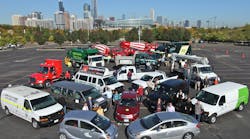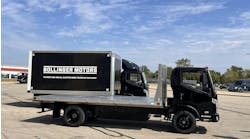A new white paper issued by the clean transportation advocacy group CALSTART attempts to map out all of the U.S. companies focused on deviling and delivering fuel efficiency technologies for heavy trucks, buses and other commercial vehicles.
By its tally, CALSTART said some 255 companies operating from 535 facilities in 40 states are in place to provide technologies to help truck and bus manufacturers meet impending Phase II greenhouse gas (GHG) fuel efficiency rules.
The white paper’s mapping function also shows “clusters of activity” in various U.S. regions, including: the upper Midwest; technology hubs in California and along the Pacific Coast; technology innovators on the East Coast including Massachusetts, New York, and the Carolinas; and a corridor that runs through, Georgia, Alabama, Tennessee, Indiana and Ohio.
Bill Van Amburg, senior vice president at CALSTART and one of the white paper’s authors, noted that medium- and heavy-duty vehicles currently account for about 20% of GHG emissions and oil use in the U.S. transportation sector, but are only about 5% of the vehicles on the road; something the Phase II rules, covering model year 2019 through 2027 heavy-duty vehicles, are designed to address.
“America has a rich, nation-wide network of high-efficiency suppliers developing and providing products for medium- and heavy-duty vehicles that can meet and exceed proposed standards,” he explained in a statement.
“This white paper just scratches the surface of that capability. High efficiency technologies and the companies making them represent an area of competitive advantage and jobs for the U.S.,” Van Amburg added. “And in a world where country after country is increasingly trying to save on fuel use, cut pollution and tackle climate change, efficient transportation technology can represent an export driver, as well.”



